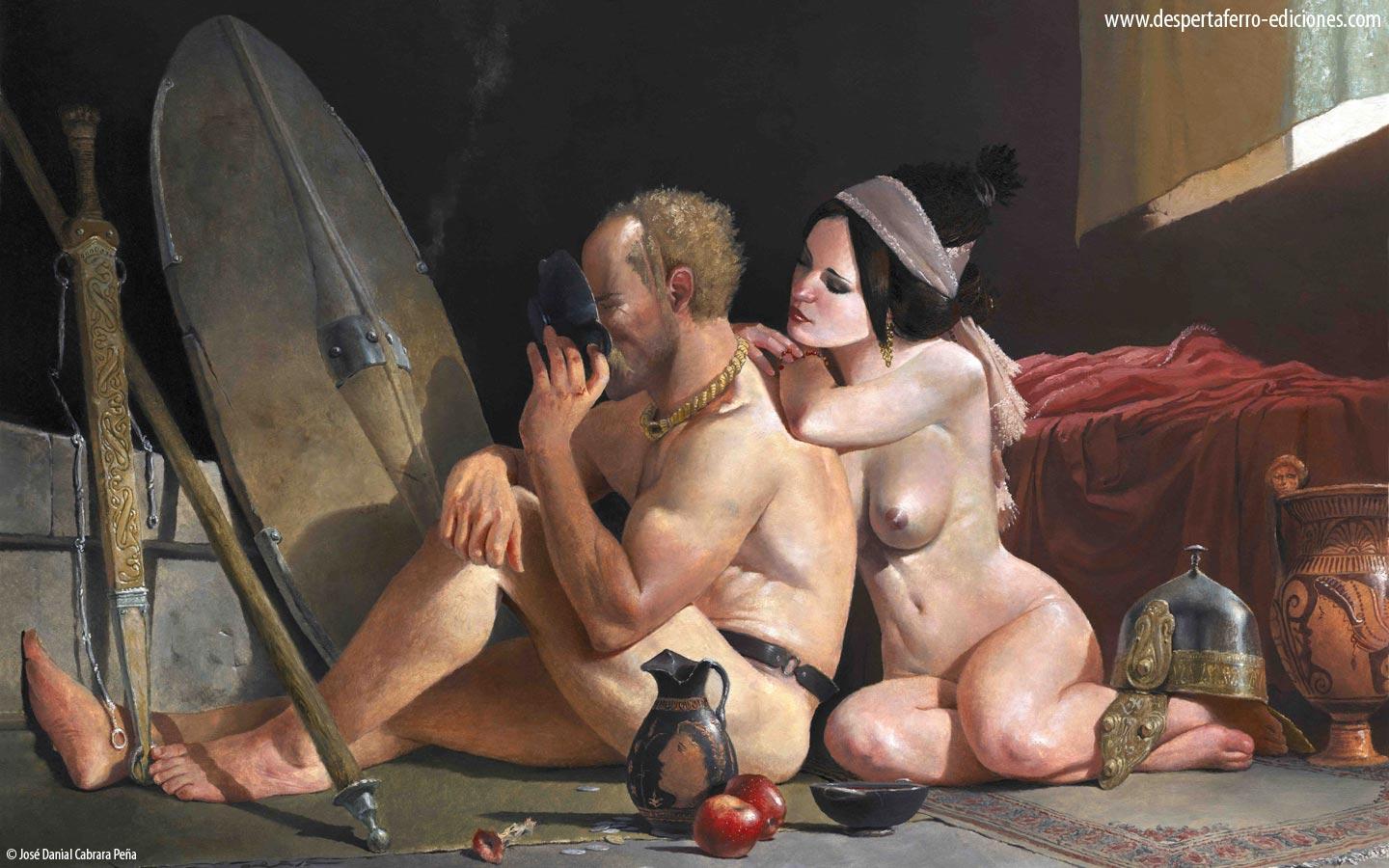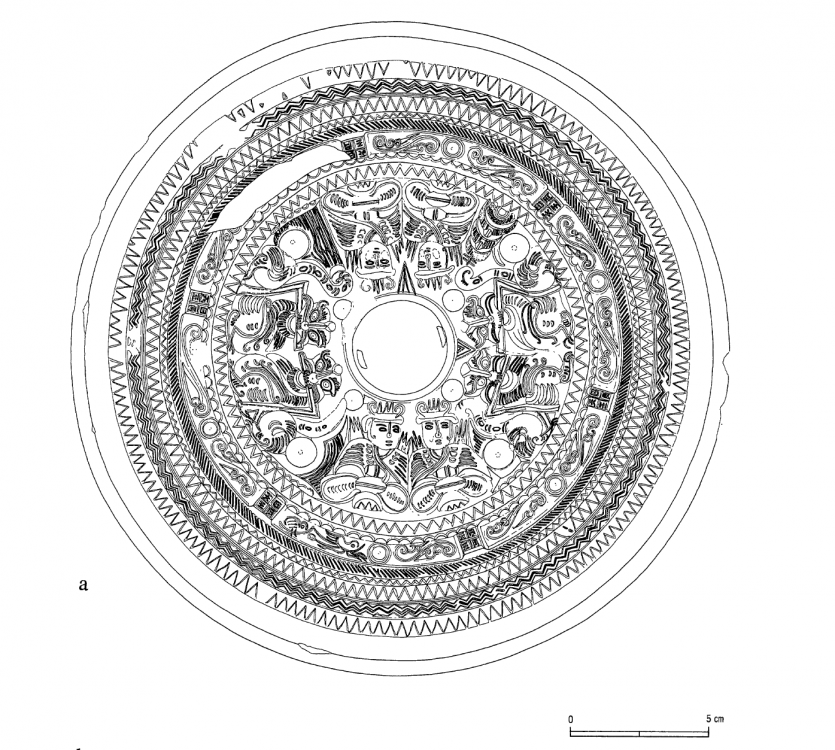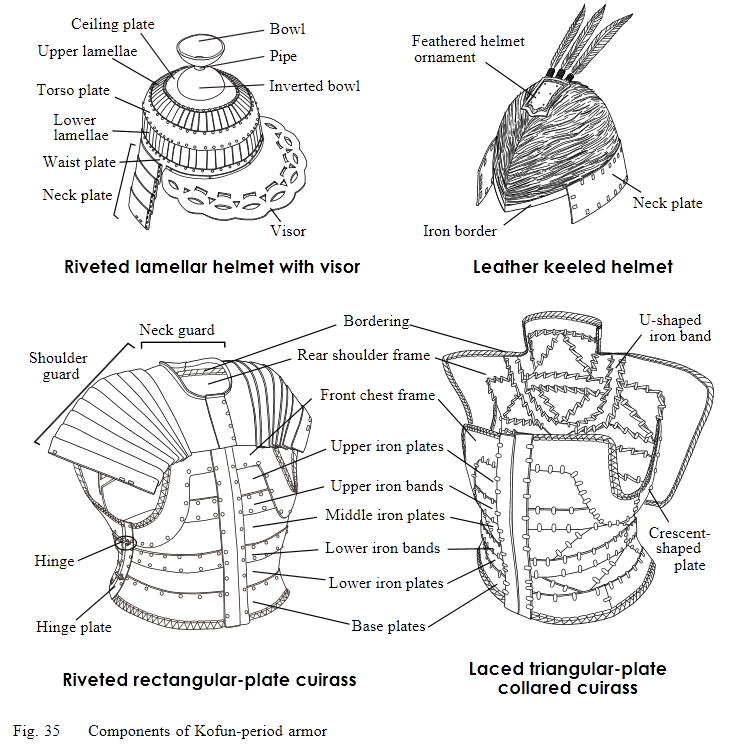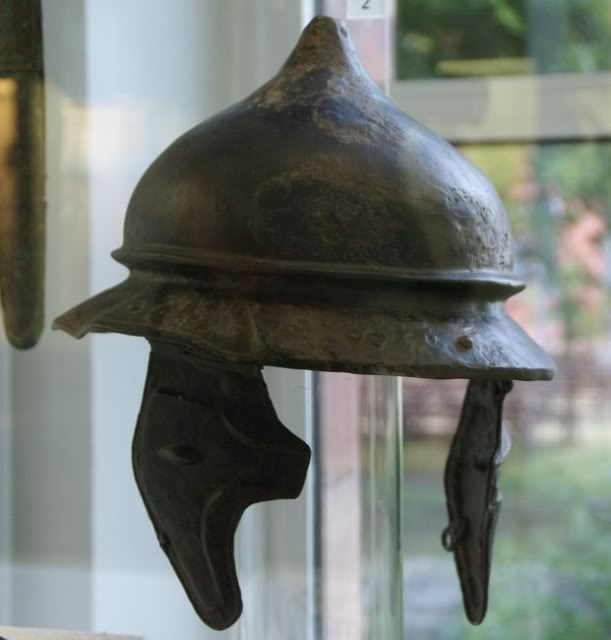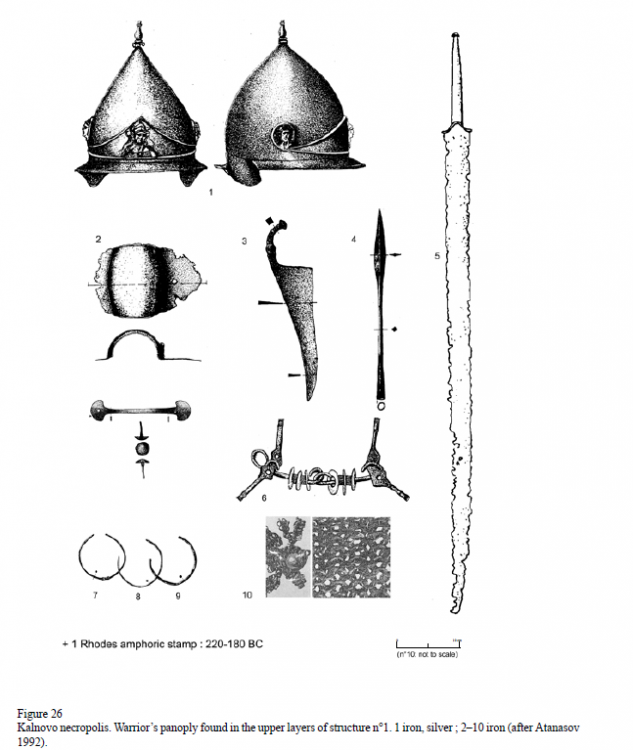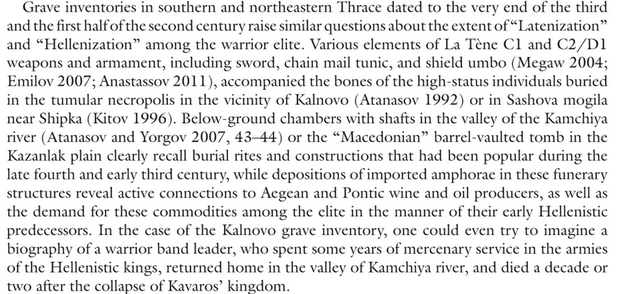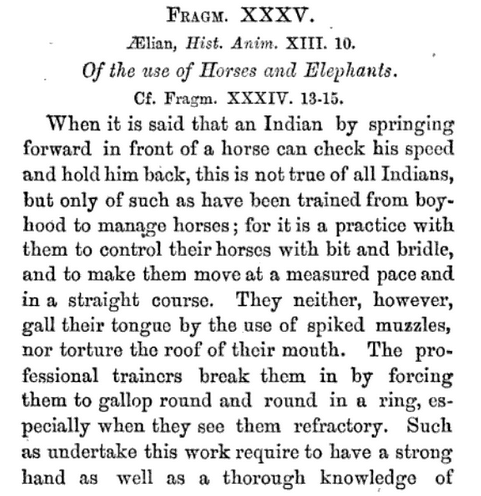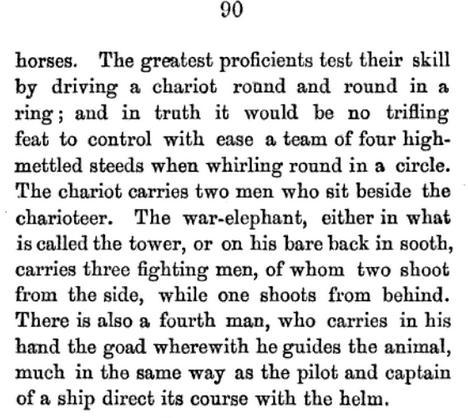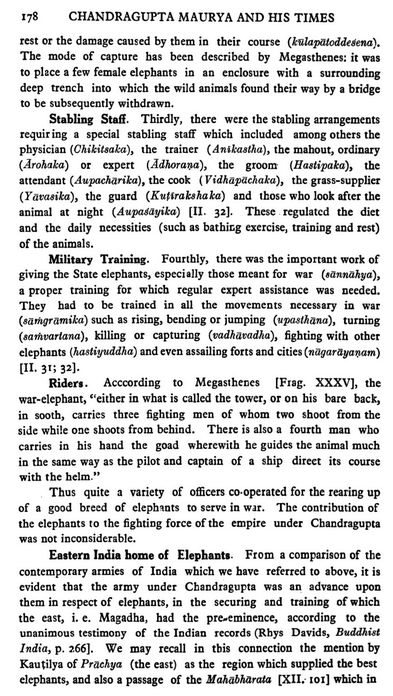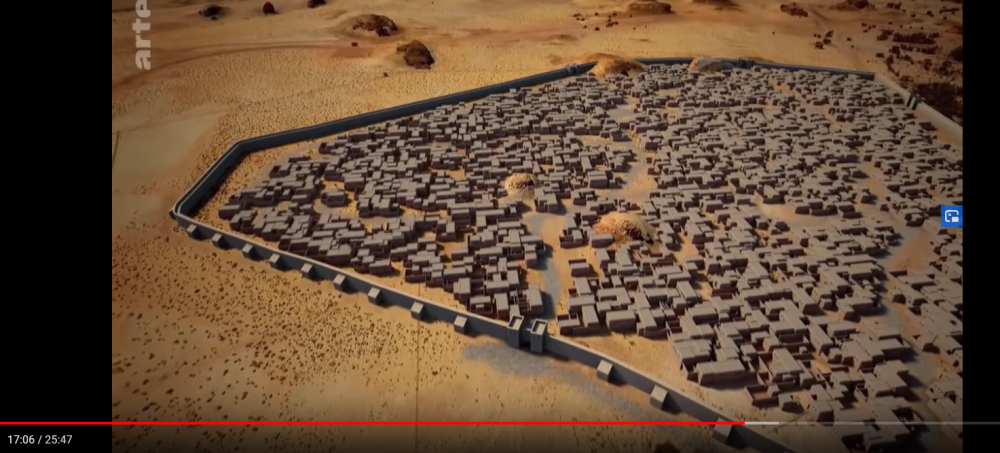-
Posts
2.379 -
Joined
-
Last visited
-
Days Won
80
Everything posted by Genava55
-
Yes it is a common design for helmet, although the Dusseldorf is maybe linked to Italic and Greco-Italic helmets because of the back neck-guard. However it was an old analogy made in the literature so it is only a hypothesis. Sadly the origin of the Dusseldorf helmet is obscure and the dating is entirely based on the typology/technology... which is not certain either. Probably not. At least I never seen an author suggesting this. The bump seems a bit small for a fixation. Maybe it is a repair.
-
The Coolus-Mannheim are exclusively in Bronze while the Gelduba is in iron (yes the rust make it misleading at the first sight). And it is probably a Weisenau (Imperial Gallic) modified helmet (or a very late Port like helmet).
-
The Port helmet is thought to be the ancestor of the Imperial Gallic series. Initially the Siemechow helmet has been thought to be a Roman helmet but recent historians highlighted the similarity with other late version of Celtic helmets in the East. The Eastern helmets didn't have a consistent type in the literature but they are clearly close to the Port type. A generic "Mihovo type" has been used but not consistently. The problem with the "Eastern Celtic type" is the misleading usage, confusing Montefortino-like Eastern helmets with the Port-like Eastern helmets. But anyway, I checked it is clearly the Siemechow type that has been used in the concept of the Lugian Late Swordsmen (I recently entered the team). Sort of. I think they added this generic bronze helmet to several elite germanic units because they faced the issue of the overwhelming absence of any evidence surrounding this topic for the Pre-Roman Iron Age. So it is not officially a Coolus but... it is like one.
-
Probably one of the series of "Les voyages d'Alix", a French comic book. https://www.bedetheque.com/BD-Alix-Les-Voyages-d-Tome-5-La-Grece-2-20005.html
-
You can probably get better picture by googling Japan Kofun Mirror. This one from a publication: Another useful document but not for the bronze mirror (too low quality): https://ir.library.osaka-u.ac.jp/repo/ouka/all/69823/OUHSS_TT.pdf
-
.thumb.jpg.b21ca1d0c15fb56b42c39b25a0a40815.jpg)
===[COMMITTED]=== Celtic Unit Helmets
Genava55 replied to Alexandermb's topic in Completed Art Tasks
This helmet found in Normandy and dated to the 1st century BC is close from its conception to the most common type known as "Alésia" (because the first was one has been found there). It is possible there was back and forth influence between the Celts from Central Europe, the Celts from North Italy, the Celts from the Balkans and the Celts from the Pontic Steppes. Maybe with Anatolia too although it is not totally certain. The Celtic world of the 3rd, 2nd and 1st century BC is highly connected. As an example of the complex interaction, here a Konos like helmet found in Kalnavo (late Thracian site) with plenty of Celtic items: -
Megasthenes fragment XXXV (probably his Indica) indicating the use of turret. https://books.google.ch/books?id=i-y6ZUheQH8C&pg=PA178&lpg=PA178&dq=mauryan+tower+elephant&source=bl&ots=t8X0TwP8hD&sig=ACfU3U0_r3EGDXrViyJ30t5D_vUv0LpSDQ&hl=fr&sa=X&ved=2ahUKEwir7NnjnuXpAhWew8QBHaKNDlYQ6AEwC3oECAcQAQ#v=onepage&q=mauryan tower elephant&f=false https://books.google.fr/books?hl=fr&lr=&id=FDCgPDe9OgAC
-
There are reliefs representing war elephants in ancient India, but I don't think there is any turret: https://www.ancient.eu/image/8567/magadhan-and-mauryan-arms-and-armour/
-
I agree: Romans first encountered elephants in battle in 280 BCE, when Pyrrhus, king of the Greek region of Epirus, invaded Italy with an army of 25,000 men and 20 war elephants. The Romans recorded the appearance of the animals on some of the heavy bronze ingots they used as currency at the time. Pyrrhus established his base at the Greek city of Taras, which placed a small image of an elephant below a dolphin rider on its silver coinage. https://coinweek.com/ancient-coins/elephants-ancient-coins/
-
.thumb.jpg.b21ca1d0c15fb56b42c39b25a0a40815.jpg)
Age of Empires 2 Definitive Edition
Genava55 replied to Lion.Kanzen's topic in Introductions & Off-Topic Discussion
Mmm I am being a nerd here but I find sad they put random "scientific" things for the research in any building. For example the chemical structure appearing is the Glyceraldehyde 3-phosphate... this is related to the Calvin cycle in photosynthesis. They should have put the chemical structure of something in use at this time. Sulfuric acid, diethyl ether, any kind of soap, potassium nitrate. Edit: the same for the math, why putting an integral in there... -
.thumb.jpg.b21ca1d0c15fb56b42c39b25a0a40815.jpg)
Civ: Germans (Cimbri, Suebians, Goths)
Genava55 replied to wowgetoffyourcellphone's topic in Delenda Est
First page of the thread. Of the current topic. -
.thumb.jpg.b21ca1d0c15fb56b42c39b25a0a40815.jpg)
Civ: Germans (Cimbri, Suebians, Goths)
Genava55 replied to wowgetoffyourcellphone's topic in Delenda Est
Your welcome Edit: by the way I added new books in my message on the first page in case you are interested @wowgetoffyourcellphone -
.thumb.jpg.b21ca1d0c15fb56b42c39b25a0a40815.jpg)
Civ: Germans (Cimbri, Suebians, Goths)
Genava55 replied to wowgetoffyourcellphone's topic in Delenda Est
Documentary mostly giving evidences from the Alemanni Small documentary about the Frankish warrior during the 5th century AD: Some footage from the place: -
.thumb.jpg.b21ca1d0c15fb56b42c39b25a0a40815.jpg)
Civ: Germans (Cimbri, Suebians, Goths)
Genava55 replied to wowgetoffyourcellphone's topic in Delenda Est
Germanic Shield Combat https://www.patreon.com/posts/37656473 -
- 264 replies
-
- 2
-

-
- britons
- east celtic
-
(and 2 more)
Tagged with:
-
.thumb.jpg.b21ca1d0c15fb56b42c39b25a0a40815.jpg)
Civ: Germans (Cimbri, Suebians, Goths)
Genava55 replied to wowgetoffyourcellphone's topic in Delenda Est
True but ancient authors tell us that people faked Tyrian purple with indigo, and probably also by mixing different pigment. -
.thumb.jpg.b21ca1d0c15fb56b42c39b25a0a40815.jpg)
Civ: Germans (Cimbri, Suebians, Goths)
Genava55 replied to wowgetoffyourcellphone's topic in Delenda Est
Torcs weren't in use by Germans and weren't found in Germanic context. It is possible they would have been accepted as a gift however the torcs have no meaning for them. Maybe it is instead the Kronenhalsringen? Or even the Roman phalerae with smaller torcs? Good question. Generally the few representation of Germanic women didn't represent their costume like this. In the case of the Portonaccio sarcophagus, a woman shows her breast only because her sleeve/strap is down. -
"like now" probably not. Northern Sahara knows an increasing trend of desertification that is due from a very long term change itself due to global and regional climate changes as you pointed out with the cycle of humid and dry periods, however the trend is still going. Furthermore, the rise of pastoralism accelerated the trend of desertification up to the modern period when a more productive agriculture started with the colonization. This further accelerated the desertification. Anyway I wasn't suggesting the elephants were everywhere in Northern Sahara. It is simply that a huge number of ecosystems were connected during the African Humid Period, with steppes, lakes and forests. Since this period ended between 4000 and 3000 BC, there was indeed a rapid change in the Sahara transforming the landscape in a desert but they were actually still remaining ecosystems in the margins at the end of the bronze age. Notably in West Africa where the change is less abrupt and close to the Tibesti mountains like in the case of the Lake Yoa. It took millennia for these ecosystems to completely collapse. So I have personally the hypothesis that elephants were still present in remaining pockets of these ecosystems during Hellenistic times (like the Atlas mountains woodland at the foothills but not only). Maybe these elephants are simply smaller because of insular dwarfism.
-
Ok thanks for the clarification. I thought the term was used for tribes at the West of Nile as well, closer to the Tibesti Mountains, but I was wrong. I found really weird they distinguish coastal and interior elephants from really further lands if there is no difference between them. There is also evidence for elephant remains in Northern Tunisia during the 9th century BC: https://www.sciencedirect.com/science/article/pii/S2352409X16302693
-
.thumb.jpg.b21ca1d0c15fb56b42c39b25a0a40815.jpg)
Civ: Germans (Cimbri, Suebians, Goths)
Genava55 replied to wowgetoffyourcellphone's topic in Delenda Est
Maybe I am confusing with Caesar account in book 6: Probably a reference to transhumance. -
Thx. Seems an interesting article and I will read it later. The thing I found particularly interesting is the mention of Troglodytic elephants, which could be an adjective for Libyan elephants. Herodotus did mention elephants previously in Lybia but his concept of Lybia is less clear than for later historians. It is interesting to have literacy evidences for elephant in North Africa and not only the neolithic carvings in Atlas mountains and skeletons from Tibesti in the Lybian desert dated from late bronze age and iron age. Yeah me neither. I wasn't sure about this opinion as well. This is why I asked your opinion, you know better than me the classical sources. And against the Gauls in southern France, Ahenobarbus used elephants against the Arverni and the Allobroges (121 BC).

